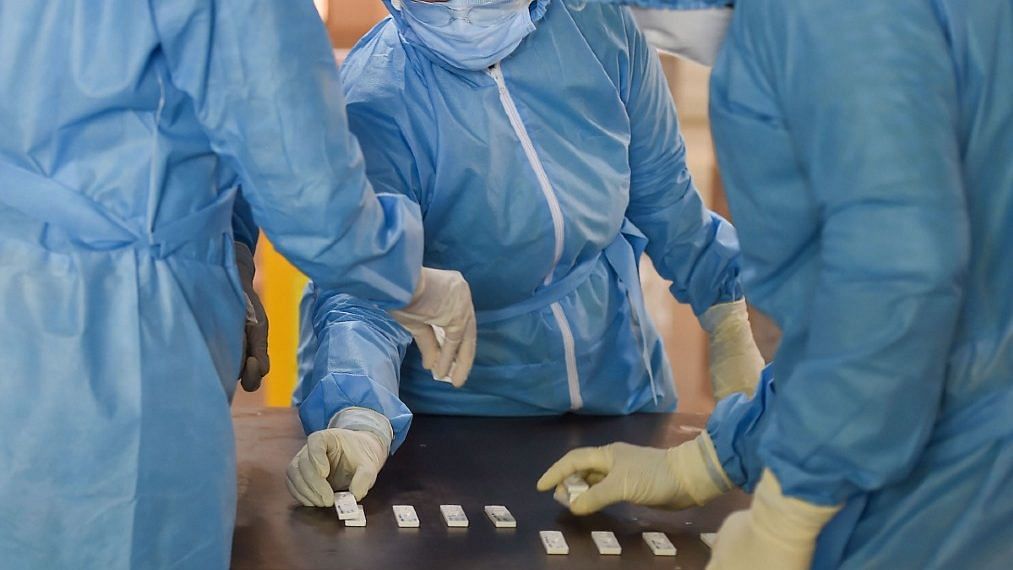Several countries, including India, are reporting cases of people testing positive for Covid-19 but not showing symptoms. This has raised questions on the explanations and the implications of the novel coronavirus infection. The tests involved are both the antigen tests for viral presence in the body and the antibody tests for the immune response developed by an infected individual.
Was a test a false positive? Was the antigen test done early in the pre-symptomatic phase and later symptoms were not documented? Were minor symptoms overlooked? Or was the test result truly positive and the person did not develop any of the Covid-19 symptoms? What are the implications of a true positive or a false-positive test result, for the person tested and for others? How will this affect the prospects for herd immunity at the population level?
Also read: Why there is a big debate over accuracy and results of Covid anti-body tests
The case of false positives
Two case studies from the US, using two different types of testing, reveal similar observations on persons who were classified as test positive. The first was conducted in a homeless shelter in Boston. Of the397 people tested, 146 were positive for antigen presence. All of them were asymptomatic and remained so under observation.
The Santa Clara study in California invited volunteers to get tested for viral antibodies. The researchers estimated that the number of infected persons was likely to be 50 to 85-times more than previously reported cases. The symptomatic cases appeared to be merely the tip of the iceberg. Using uncertainty limits around the estimated point prevalence (‘the proportion of a population that has a characteristic at a specific point in time’), the authors concluded that between 2.5 per cent to 4.2 per cent of the population in Santa Clara had been infected by early April. A later study in Los Angeles County also suggested 28 to 55 times more cases identified by the antibody tests than revealed by earlier antigen tests.
Were the tests technically faulty? If that were the reason, false-negative tests would have been more likely. Was there a temporal disconnect between the time of testing and the time of symptoms? The Boston cohort was closely observed and later symptoms would have been recorded. The Santa Clara and Los Angeles volunteers would have had the infection a few weeks ago and symptoms, if any, would have been reported.
Were they false-positive results? The probability of a false positive test increases in persons who are asymptomatic and have no history of contact with a Covid-19 case, because of low prior probability of exposure. This is explained by the Bayesian conditional probability, which demonstrates that the post-test probability is a product of both the the pre-test probability and the test result, not just the test result. Those tested in the Boston shelter had possible contact with a few cases reported there earlier but the Santa Clara volunteers had no verifiable history. The RT-PCR (reverse transcription polymerase chain reaction) or the antigen test has a very high specificity for the viral antigen and false-positive tests are unlikely. The antibody tests have less certainty built into them, with a higher sensitivity but lower specificity than the RT-PCR kits. So, there is a higher risk of false-positive results when the rapid antibody test kits are used. That may translate to a large number of false positives in an asymptomatic population.
Also read: China’s data on asymptomatic Covid cases shows most people never get sick
Rise of asymptomatic people in India
Many of these asymptomatic Covid test positive individuals, in India and abroad, are under 50 years of age. Their greater social mobility may have exposed them to the virus without their knowledge. Therefore, lack of contact history does not necessarily increase the probability of a false-positive result in them. So, the likelihood of a large number of persons in this group having actually had exposure to the virus remains high. It is best to assume so, for purposes of Covid-19 control. For the false positive-labelled individual, however, there is a misplaced sense of security in assuming acquired immunity.
What are the implications of these studies? It is good news that many infected younger adults are recovering without developing symptoms, perhaps because of greater fitness and better immune status. The infection fatality rate (IFR) in the overall population would be much lower than the case fatality rate (CFR) estimated from symptomatic and diagnosed cases. If the infection yields a strong immune response in such persons, they can become plasma donors to potentially save the lives of seriously ill patients.
At the population level, however, the challenge is to contain the danger of virus dissemination by the infected, unaware and freely mobile person. We cannot repetitively search and sieve the entire population to identify such persons through testing. So, the best way to limit spread is to practice social distancing and personal hygiene to prevent spread between the unaware virus hosts and the unprotected potential recipients.
India, then, has to dutifully ensure that the poor have housing and occupational environments where they too can achieve social distancing. A worrisome aspect is that, despite the manifold increase in numbers of the infected, obtained by combining the un-enrolled asymptomatic Covid graduates with the registered class of Covid cases, infected persons ranged only between 2-4 per cent of the population. Herd immunity goal of 60-70 per cent infectivity in the population appears far away. A vaccine is also unlikely to be at hand until at least 2021. Till either of these is available to handcuff the virus, we stay two metres apart and compulsively clean our hands.
The author is President, Public Health Foundation of India. Views are personal.
